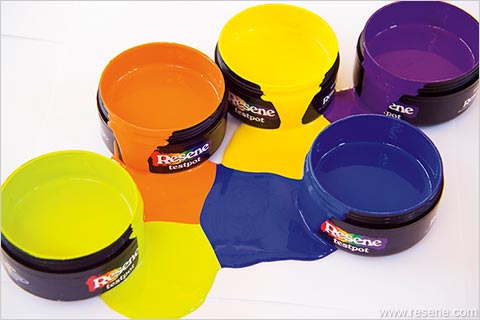From Habitat magazine - issue 05
The brushes are bought, the roller lies in wait in its tray, and the paint tins are just tempting you to lift the lids and unleash the colour inside… but first, take a look at the weather.

Just what makes the ideal painting day? It’s important to get it right or chances are you’ll be less than satisfied with the results. “Ideal” is a tough concept, though – like most things, you’re best to aim for moderation.
Take temperature, for example. We typically have two types of paints to worry about – solventborne enamels and a wide range of latex-based waterborne paints. How does cold affect them?
All paints get thick (or more viscous) in the cold and are much harder to use, especially solventborne enamels. One answer is to add thinners, but this has the side-effect of reducing film build and therefore appearance. A better solution is to stand the paint in warm water, which makes it much easier to apply and helps get that smooth, brush mark-free finish that you want.
Cold temperatures can really slow down the drying time of solventborne enamels, but can also be totally catastrophic to the drying of waterborne latex paints. The plastic particles that make up the latex binder will harden in the cold to the extent that they can’t fuse together to form a film. This can result in cracks forming and even, sometimes, the whole paint film drying to a powder.
Crank the temperature up too high, however, and a new set of problems surfaces. There are not any real issues with the solventborne systems, but waterborne systems can just dry too fast.
When waterborne paint dries too rapidly, it doesn’t have time to flow out into a smooth, consolidated film. Also, the paint dries so quickly in the brush itself that it becomes almost impossible to clean.
What’s more, temperature always has to be looked at it in combination with atmospheric moisture. We’re not talking rain, here – it’s pretty obvious that you can’t paint outside in the rain. We’re talking humidity.
Humidity is the amount of moisture in the air. If the air is full of moisture (i.e. humidity is high) it is slow to accept more water into it and waterborne paints will be very slow to dry. This will lead to easy application – beautiful flow – but there is also a risk of water-sensitive materials accumulating on the surface.
Low humidity means the air is thirsty for moisture and will grab it, fast, from anywhere – such as a paint film. Low humidity, high temperatures and – additionally – a porous surface will lead to ultra-rapid loss of water and ultra-fast drying. So fast, in fact, that the particles in the film won’t have time to arrange themselves properly.
To help overcome this, hot weather additives, which can slow things down a bit, can be added to the paint. And if the surface is porous, it can be pre-wetted with water before the application of waterborne paints.
So, what is ideal? 15-20°C, humidity 70-80% and a very gentle breeze. In the absence of the ideal, the following is a useful checklist:
Is the washing on the line drying? If it’s not, neither will your paint.
If water spilt on a concrete path doesn’t dry out, leave your painting until it does.
If a thin coat of water applied to the substrate has not evaporated in 15 minutes, leave your painting until it does.
A light breeze is ideal for drying your paint. If it’s too windy, your paint will dry too fast, so move operations to a more sheltered side of the building.
Don’t paint in direct sunlight or in extremely hot weather. If you’re pushed, paint the shady side of the building or wait until the temperature drops.
Cloudy or overcast conditions are ideal for painting… provided it’s not raining and rain is not expected.
Read the label on your paint tin. If you follow its recommendations, you’ll reap the full benefit of the protective capabilities and finishes of your paint.
words: Rachel Macdonald
pictures: Courtesy of TRANZ and Lucent* Media
Search habitat magazine stories
Printed copies of habitat highlights are available from late March 2024 at Resene ColorShops and resellers, while stocks last. You can view back issues of habitat magazine online.
Specifiers:
If you have an idea, project or story that you think would suit habitat, we’d love to hear from you. Please drop us an email with your details and include photos if submitting a project.
Sign up for a DIY card and Save! Australia | New Zealand